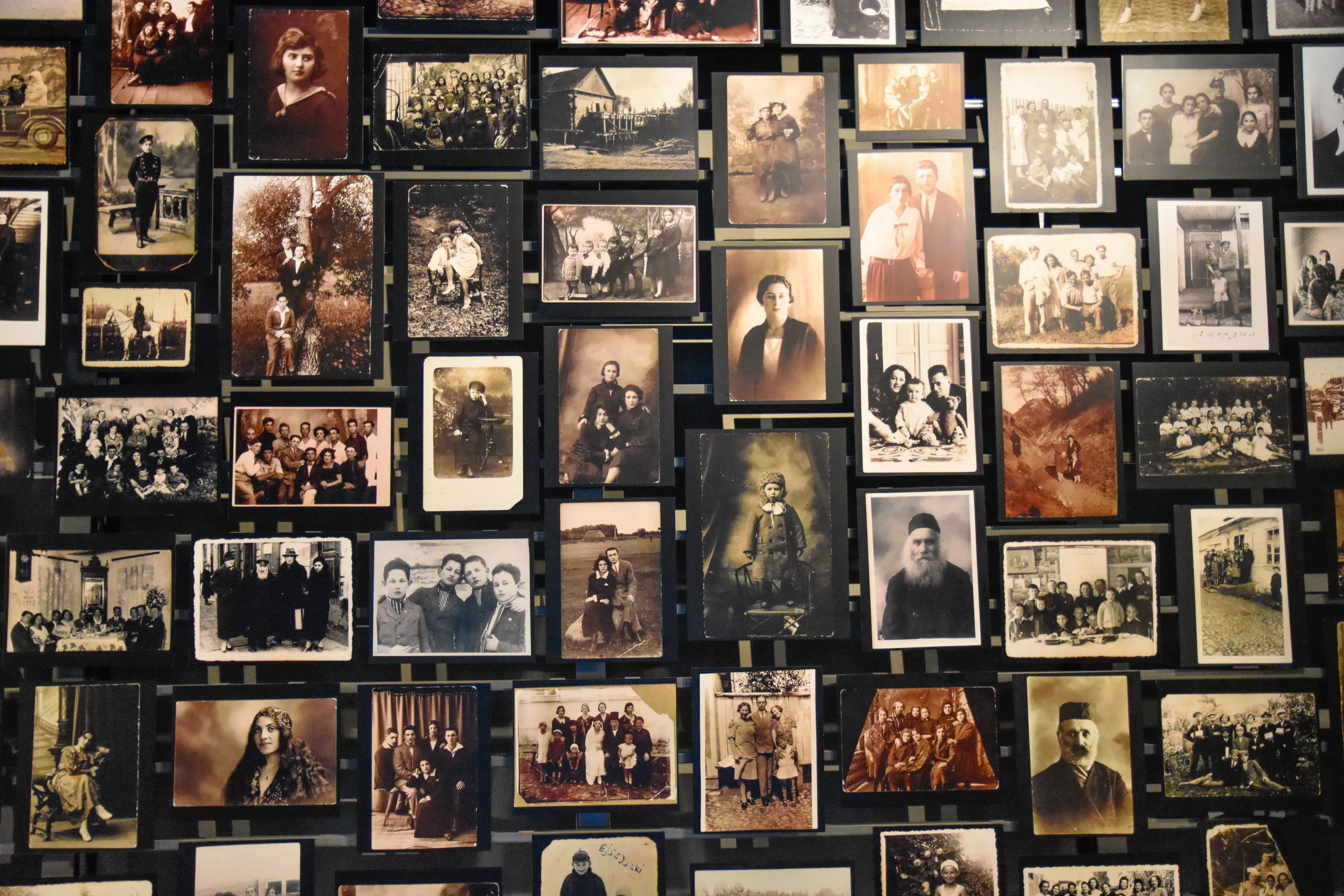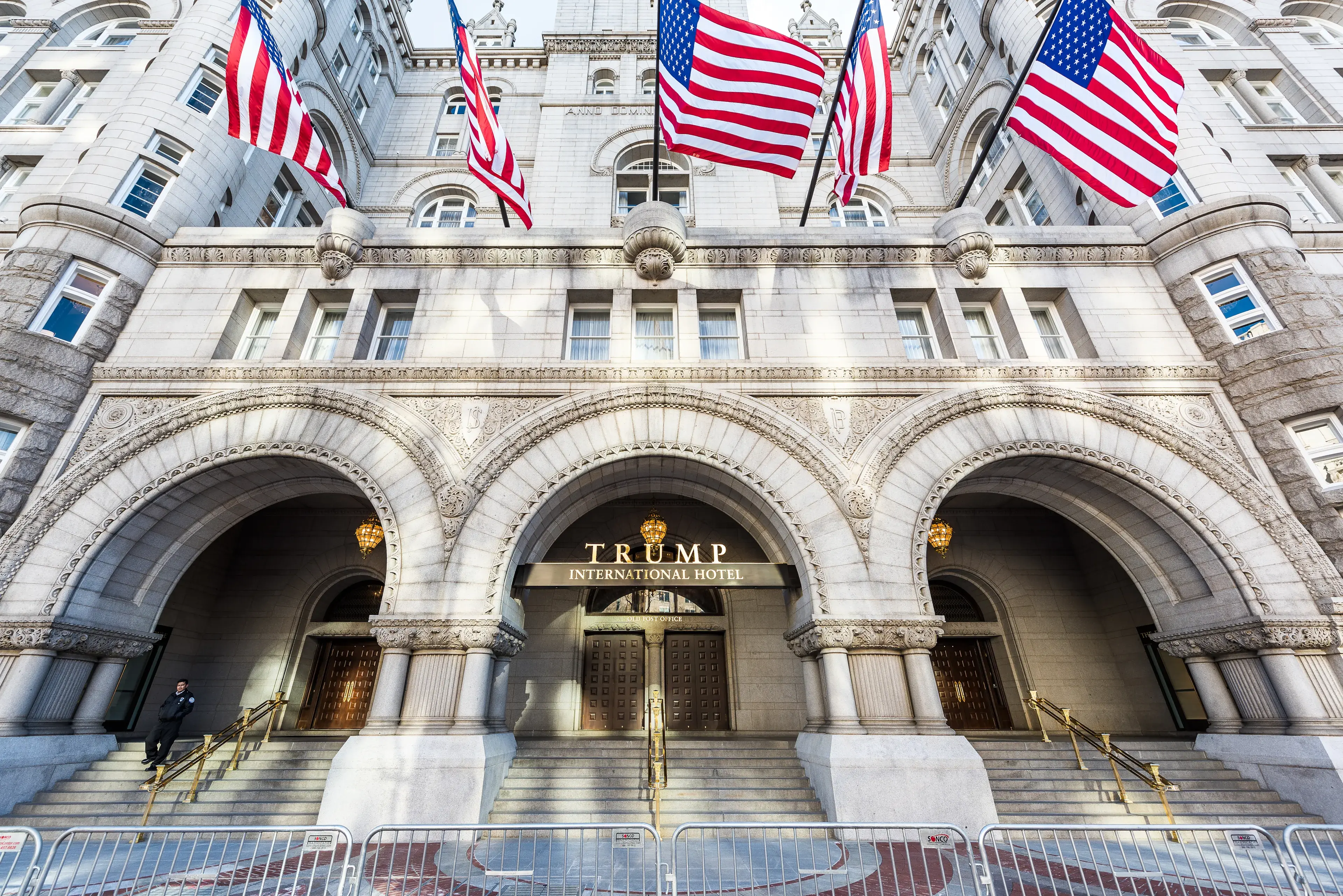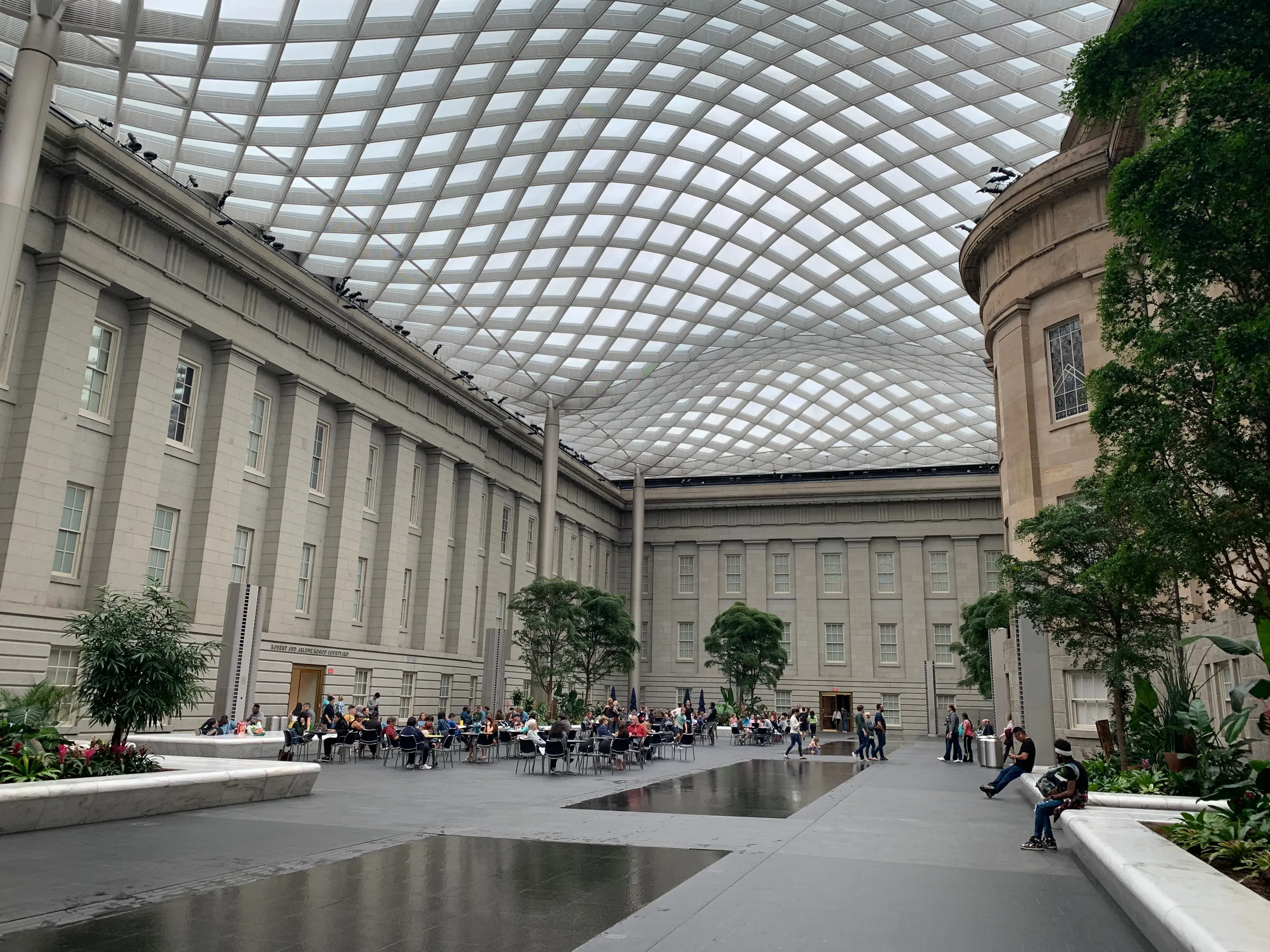
United States Holocaust Memorial Museum: A Complete Visitor's Guide to DC's Living Memorial | Hours, Exhibits & History
On This Page:
While most of the amazing monuments, museums, and spectacular government buildings of Washington D.C. serve to inspire Americans and others visiting from around the world, not every tourist site is uplifting. Case in point is the United States Holocaust Memorial Museum, where you really need to prepare yourself before deciding to visit.
Is this museum worth taking vacation time to visit? Without a doubt, our answer is a resounding yes. Learning about the disturbing history of the Holocaust surely is not an uplifting experience, but it is a powerful reminder of the atrocities leading up to and during WW II. The museum’s hope is that visitors will want to confront hatred, antisemitism, and genocide in the future.
If you are traveling with child and wondering if the Holocaust Memorial Museum is appropriate for them, the museum’s website is clear that some of its graphic collection may not be ideal for viewing, especially for younger than 11 years of age.
Important: Timed-entry tickets are required for admission only to the Permanent Exhibition, as this is the most popular area and often draws crowds. Tickets are FREE and should be reserved online in advance. You may reserve tickets 2-4 months ahead of time by clicking here. The latest entry time is 4:30 p.m.
About the Museum
Nearly 50 million visitors have toured the Holocaust Memorial Museum since its opening in 1993 on the National Mall. This includes more than 100 international leaders and 11 million school-age children. Located on Raoul Wallenberg Place, the street is named for the Swedish architect, businessman, humanitarian, and world hero who was personally credited with saving the lives of tens of thousands of Jews during the Nazi occupation of his home country.
The museum’s permanent and special exhibitions often focus on the recent rise in antisemitism and Holocaust denial, as well as the fact that genocidal threats continue in various places around the world to this day. In the not too distant future most Holocaust survivors who are alive today will no longer be with us, so the museum continues to record and chronologize individual experiences of these survivors for the benefit of future generations.
Utilizing photographs, video footage, and thousands of historical artifacts, the Holocaust Memorial Museum takes visitors through the rise to power of Adolf Hitler, the antisemitic propaganda of the time, and the shocking plans for the Final Solution which called for total elimination of the Jewish population in Europe.
In addition to its permanent exhibition, "The Holocaust," the museum offers several special exhibits that change throughout the year. Visitors can tour the Hall of Witness, a three-story chamber that is a central gathering place beneath skylights, and the Hall of Remembrance, featuring an eternal flame where many people stop for some personal time of reflection.
Interestingly, the Holocaust Memorial Museum was built making use of construction methods from the industrial past of the late 1800s and early 1900s. Visitors will notice, especially in the Hall of Witness, the steel plates, rivets, bolted pieces of sheet metal, raw brick, and tie rods connected to turnbuckle to adjust tension, which were construction methods employed a century and more ago. For those who may have visited any of the concentration camps that now serve as historical sites in Europe, you will notice the similarities between those buildings that became “factories of death” and the museum.
Let’s take a closer look at how the Holocaust Memorial Museum is designed to maximum your time here.
Permanent Exhibition: “The Holocaust”
Plan for one to three hours to view the permanent exhibition which is divided into three time periods. This self-guided tour (easy to follow using the pamphlet provided by the museum or by following others) starts on the third floor and works its’ way downstairs while following a chronological history of the Holocaust. Museum guests will be awestruck by the volume of photographs, time-period films, and historical artifacts that have been collected here. Most striking are the many personal testimonies of the lucky few who survived the experience. Their eyewitness accounts often send chills through visitors as they hear these now very old or in some cases deceased people who were Nazi prisoners recount what transpired for them personally.
Nazi Assault: 1933-1939
Beginning with the liberation of prisoners, the Permanent Exhibition presents concentration camp photos taken in 1945 by soldiers who arrived early-on at these sites. When these images were released to the public, everyone including the troops who had been fighting a horrific war for several years were overwhelmed by what was discovered. While it was widely known that the Nazi regime of Hitler was brutal, the extent of this brutality caught the world by surprise.
Learn how during the Nazis were able to plan for mass murder under the auspices of war, keeping the systematic elimination of Jews and other minority groups concealed for many years. From 1933 when the Nazi party gained power until September 1939 when World War II officially began, the Nazis were setting in place their extreme agenda for dominating Europe, relying on violence, terror, government led racism, and propaganda to assure that German’s supported the cause.
It was during this period that Jews were no longer considered welcome in Germany. Amazingly, most of the citizenry supported Adolf Hitler’s plans to at the very least deport them from the country. You will also learn how Americans responded to what they knew of the Nazi actions before the Holocaust had begun, and how many Jewish refugees seeking entry into the U.S. were rejected from entering the country.
The “Final Solution”: 1940-1945
The second floor of the museum’s Permanent Exhibition is devoted to Nazi policy toward the Jews during the war years. You will see how German-controlled land expanded as the Nazis invaded bordering countries including Austria, Poland, Czechoslovakia, France, Belgium, Netherlands, and others. This was the period when Jews were forcefully segregated from other nationalities and required to wear a yellow Jewish star attached to their clothing and to have a number tattooed on their forearm.
The exhibit next details how the German army invaded the Soviet Union and began the planned extermination of the Jewish people. The Nazi’s called this the “Final Solution of the Jewish Question”, with an incredible 44,000 ghettos established for the Jews to live in, along with prisons and concentration camps. The facilities were not only in Germany, but in Austria, Poland, and other neighboring countries that the Nazi’s had conquered.
By war’s end, six million Jews had been murdered in Europe. At the beginning of the Nazi’s rise to power there were nearly nine million Jews on the continent. Not to be missed on the second floor is theater area is the film “Voices of Auschwitz”, where survivors of the concentration camp in Poland speak about the horrors of being deported here. More than one million prisoners were killed here, including Jews, and Polish and Russian prisoners of war.
The history contained on this floor is certainly disturbing, but it is historically accurate as well, which is of utmost importance to the museum’s curators. Visitors are exposed to the world of the concentration camp, each always holding thousands if not tens of thousands of prisoners. As prisoners were murdered, new arrivals quickly took their places arriving by freight train from throughout Europe. The armed resistance in the Warsaw Ghetto and the story of Anne Frank are thoroughly examined as you walk in somber silence through the exhibition.
Last Chapter
The liberation of the concentration camps and liberation of surviving prisoners is addressed on the first floor. You will learn about the many daring rescues that took place and underground resistance to the Nazis in occupied countries. Survivors and their rescuers are permanently recalled in the film, “Testimony” which can be viewed here.
The Last Chapter focused directly on the responsibility of all human beings to assist others who are in danger, whether they are someone you personally know or not. There is a fascinating display about the many thousands of non-Jews who stepped up, risking death or prison, to help save their neighbors and other oppressed groups. You will also learn about people who turned the other way by assisting the Nazis in their genocide quest. And most Europeans out of fear did nothing to help or hinder the Nazis during the war.
Some of the most inspiring features of the Holocaust Memorial Museum are the stories of heroism late in the war, where French villagers, Danish humanitarians, and others including Raoul Wallenberg, pooled their resources to save an estimated 100,000+ Jews from Hitler’s army which meant certain death.
Debating Whether to Visit the Holocaust Memorial Museum?
If you are unsure if a visit to this world-renowned museum is right for you as an individual, couple, or family with children, here are some random comments from past visitors that have been posted online:
“Don’t let the dark subject matter dissuade you from visiting this museum. The museum is dark and sobering as you’d expect, but it’s also both enlightening and fascinating. This place will likely touch you on multiple levels. Do it.”
“I am so impressed with the information and collectibles obtained. The photos took my breath away; these were real people, and this tragedy should never be forgotten.”
“A must-see if in D.C. Give yourself plenty of time for this museum. Everything has meaning. Everywhere you look there are incredible pictures. Take your time, watch the videos, read the items, look again at the pictures. It will humble you.”
“Confronting, yet compelling. The story unfolds over three floors as you move through the exhibition. The special children’s exhibit tells the story of Daniel in a way that doesn’t shy away from what happened, yet in a sensitive way more suitable for children. It is a confronting, sobering, yet compelling experience. Not to be missed out of all of museums in D.C.
In addition to the Permanent Exhibition the museum presents temporary exhibits about other topics of interest. Some past exhibits include America’s Role in the Holocaust, Burma’s Path to Genocide, and the short (10 minutes) but reflective film “One Thousand and Seventy-Eight Blue Skies” that shows the sky above 1,078 killing centers across Europe that were established by the Nazis.
In closing, the U.S. Holocaust Memorial Museum is a place that you will never forget visiting. Tastefully presented throughout, especially given the sensitivity and darkness of the subject matter, the somber mood that prevails as you stroll through the displays may stay with you for some time after departing.
A frequent recommendation is to plan this museum in the middle of your Washington, D.C. vacation, and preferably in the morning or early afternoon. Plan something fun and uplifting for later in the day such as the Lincoln Memorial, Jefferson Memorial and Tidal Pond, or just a walk along the National Mall to take in the amazing Smithsonian building’s architecture.


